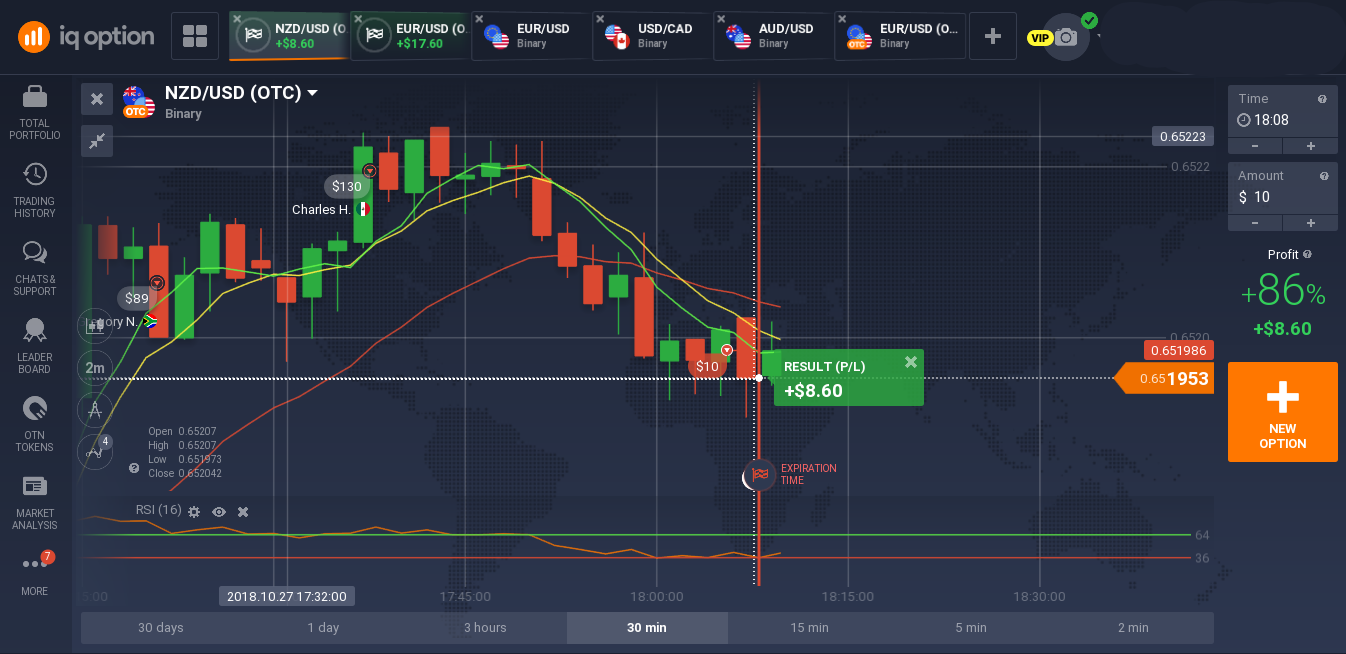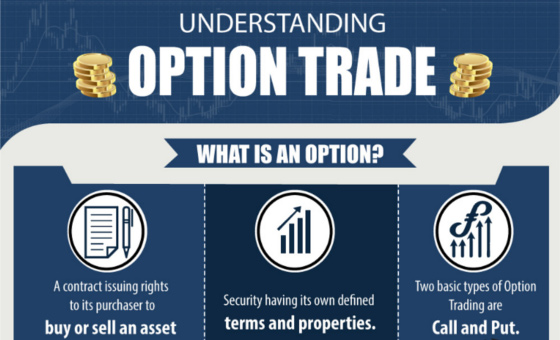The world of finance can be intimidating, but one tool that has captivated investors of all levels is options trading. Imagine having the opportunity to control the price movements of large companies, not by buying their stocks directly, but by using contracts that give you the right—but not the obligation—to buy or sell those stocks at a specific price and time. This intriguing concept is the heart of options trading, and while it might seem complex at first, it offers a unique avenue for diversification, risk management, and potentially greater returns. I first became fascinated with options trading when I stumbled upon a scenario where a small investment could yield substantial profits if the price of a stock moved my way. The power of leverage, and the ability to profit even if the underlying asset price goes down, intrigued me. This journey led me down a rabbit hole of learning, which ultimately opened my eyes to the strategic possibilities offered by options trading.

Image: myfinanceresources.com
While the potential rewards can be alluring, it’s crucial to approach options trading with a clear understanding of the risks involved. This guide will give you a comprehensive overview of this complex but powerful financial tool, demystifying the jargon and illuminating the pathways to successful trading.
Understanding the Basics of Options Trading
At its core, options trading involves buying or selling contracts that grant the holder the right, but not the obligation, to buy or sell an underlying asset at a predetermined price—known as the strike price—on or before a specified date—the expiration date.
Types of Options
There are two main types of options:
- Calls: Give the holder the right to buy the underlying asset at the strike price. Call options are valuable when the price of the underlying asset is expected to rise, allowing the owner to buy the asset at a lower price than the market and then sell it for a profit.
- Puts: Give the holder the right to sell the underlying asset at the strike price. Put options are valuable when the price of the underlying asset is expected to fall, allowing the owner to sell the asset at a higher price than the market.
Options Premiums
When you buy an option contract, you pay a premium to the seller. This premium is essentially the price you pay for the right to exercise the option. The premium reflects the value of the option—how likely it is to be exercised and how much potential profit it offers.
Options premiums are influenced by various factors, including:
- Underlying asset price
- Strike price
- Time to expiration
- Volatility
- Interest rates

Image: www.visualcapitalist.com
Options Strategies
Options trading goes beyond simply buying or selling calls and puts. Different strategies can be employed to achieve specific investment objectives, such as:
- Covered calls: Selling call options against stock ownership, generating income while limiting potential upside.
- Protective puts: Buying put options to protect against downside risk in stock ownership.
- Straddles: Buying both a call and a put option with the same strike price and expiration date, for high volatility plays.
- Strangles: Similar to straddles, but with strike prices higher and lower than the current market price.
The Latest Trends in Options Trading
The world of options trading is constantly evolving, with new strategies and platforms emerging. Here are some of the most prominent trends:
- Growth of retail options trading: As online brokerage platforms become more accessible, retail investors are increasingly participating in the options market. This influx of new traders has led to increased volatility and potentially higher premiums.
- Rise of meme stocks: The popularity of social media platforms, particularly subreddits like WallStreetBets, has fueled the rise of meme stocks, which often see heightened options trading activity.
- Automated trading platforms: Algorithm-driven trading systems are becoming increasingly prevalent, allowing for complex options strategies to be executed quickly and efficiently.
- Increased use of options for hedging: Options are increasingly employed by investors and institutions to mitigate risk, such as by protecting portfolios against market downturns.
Tips for Successful Options Trading
Options trading can be lucrative, but it requires a solid understanding of the underlying principles and a disciplined approach. Following these tips can help you navigate the complexities of options trading:
- Thorough research and due diligence: Before entering any options trade, it’s essential to have a deep understanding of the underlying asset, its price history, and the factors that might influence its future movement.
- Choose the right options strategy: There are countless options trading strategies, each with its own risk and reward profile. Carefully select a strategy that aligns with your investment goals and risk tolerance.
- Start small and manage risk: Avoid placing large bets on options contracts until you have gained sufficient experience and confidence. Implement risk management techniques, such as setting stop-loss orders, to control potential losses.
- Utilize educational resources: There are numerous online resources, books, and courses dedicated to options trading. Take advantage of these tools to enhance your knowledge and refine your trading skills.
- Stay updated on market trends: The options market is dynamic and influenced by global events, economic indicators, and even social media sentiment. Regularly update your knowledge and monitor market trends to make informed trading decisions.
- Use a reputable brokerage platform: Choose a brokerage platform that provides access to comprehensive options trading tools, educational resources, and reliable customer support.
Remember that options trading is a complex endeavor. It’s crucial to approach it with a well-defined plan, a strong understanding of the risks involved, and a commitment to ongoing learning. While this guide provides an introduction to the world of options trading, it’s essential to actively seek out additional learning materials and resources to continuously expand your knowledge and skills.
Frequently Asked Questions
What are the risks associated with options trading?
Options trading carries significant risks, including:
- Unlimited loss potential: Unlike stocks, where your loss is limited to the price of the stock, losing an options trade can result in losing the entire premium paid and potentially more, depending on the option strategy used.
- Time decay: Options lose value as their expiration date approaches, a concept known as time decay. The value of an option contract can dwindle, even if the underlying asset price remains unchanged.
- Volatility risk: Options contracts are highly sensitive to volatility in the underlying asset’s price. High volatility can create unexpected profits or losses.
- Counterparty risk: There is a risk of default by the option seller, leaving you unable to exercise your options.
Is options trading for everyone?
Options trading is not suitable for every investor. It requires a strong understanding of financial markets, a willingness to accept risk, and a dedication to ongoing learning. If you are not comfortable with the inherent complexities and risks associated with options trading, it’s best to stick to traditional investment strategies like buying stocks or holding mutual funds.
How can I learn more about options trading?
The world of options trading is extensive. You can find valuable resources, books, courses, and online platforms dedicated to teaching options trading strategies and principles. Consider exploring online brokers offering educational resources like articles, videos, and webinars on options trading. Additionally, consider joining financial forums, communities, and groups to connect with experienced traders and learn from their insights.
Trading Options
Conclusion
The world of options trading offers a unique set of opportunities and challenges, with the potential for both significant profits and substantial losses. It’s not a get-rich-quick scheme, but a strategic tool that can be utilized to enhance returns and diversify portfolios when approached with knowledge, discipline, and a strong understanding of risk management. Before you embark on your options trading journey, remember to educate yourself, start small, and always conduct thorough research. Are you ready to unlock the power of options trading?






